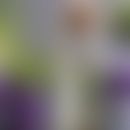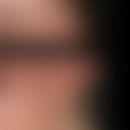Synonym(s)
DefinitionThis section has been translated automatically.
Deciduous shrub up to 60 cm high, pale red to greenish flowers, small spherical, blue-black fruits, the actual blueberry.
Vaccinium myrtillus, known locally as blueberry, is a plant from the blueberry genus (Vaccinium) within the heather family (Ericaceae).
Both the dried ripe fruit (Myrtilli fructus siccus, Vaccinium myrtillus, fructus siccus) or fresh ( Myrtilli fructus recens), as well as the dried leaves (bilberry leaves - Myrtilli folium) are used phytotherapeutically.
The astringent, epithelial regenerating, antiphlogistic, antiseptic, antiemetic and antioxidant and at the same time capillary stabilizing effect defines the indication of bilberries.
Bilberries are traditionally used for the symptomatic treatment of diarrhea, vomiting, heaviness of the legs and varicosis, as well as hemorrhoids.
Externally for inflammation of the mucous membranes and moist skin changes.
Caution: Only use dried fruit for diarrhea!
General informationThis section has been translated automatically.
The deciduous shrub grows to a height of up to 60 cm and reaches an age of up to 30 years.
The leaves of the plant are 2 to 3 cm long, egg-shaped and grass-green. The flowers are in the leaf axils, their crown is 3.5 to 5 mm long, spherical and greenish to reddish in color. The flowering period begins in April to May. In the months from July to September, the plants then bear black-blue, solitary fruits, which have a blue-grey or deep blue color when ripe. From late summer, the shrub's autumn coloring begins - the foliage turns a deep red.
The cultivated blueberries available on the market are not descended from the blueberry native to Europe, but from the American blueberry (Vaccinium corymbosum) and other North American species. The leaves contain up to 1.5% arbutin and hydroquinone and are therefore slightly toxic
Vaccinium myrtillus is the parent plant of Myrtilli fructus
Ingredient(s)This section has been translated automatically.
Catechin compounds: proacanthocyanides, ellitannins and anthocyanins, flavonoids, flavone glycosides, caffeoylquinic acids, fruit acids, vitamin C
LiteratureThis section has been translated automatically.
- Gaspar DP et al (2021) Food supplements based on wild cranberries - what is the quality situation? Z Phytother 42: 69-116
- Wenigmann M (2017) Phytotherapy, medicinal drugs phytopharmaceuticals application. Urban & Fischer: 121-122
- https://arzneipflanzenlexikon.info/heidelbeere.php
Blaschek W (2015) Wichtl tea drugs and phytopharmaceuticals. A handbook for practice. Wissenschaftliche Verlagsgesellschaft Munich. S 443-444



